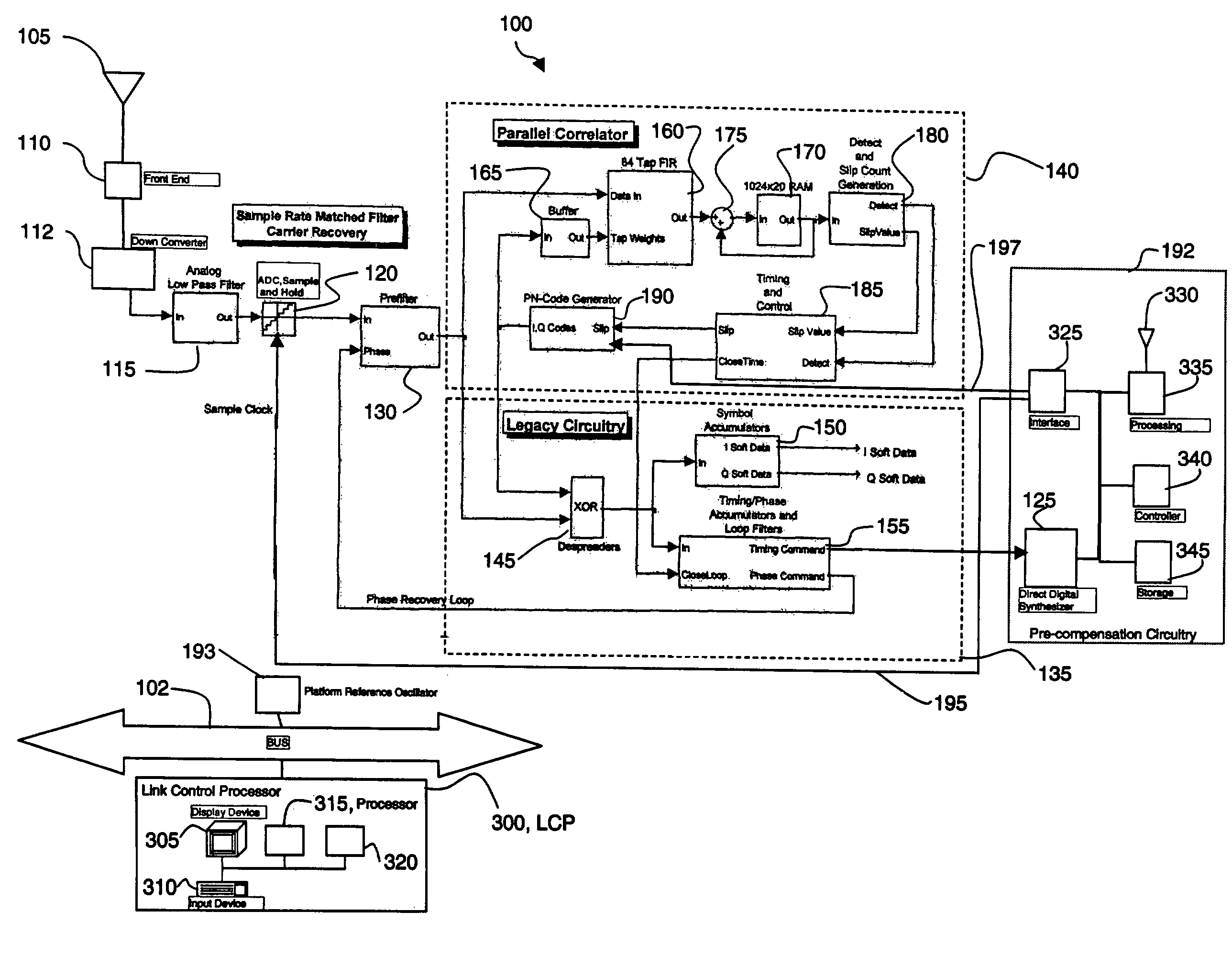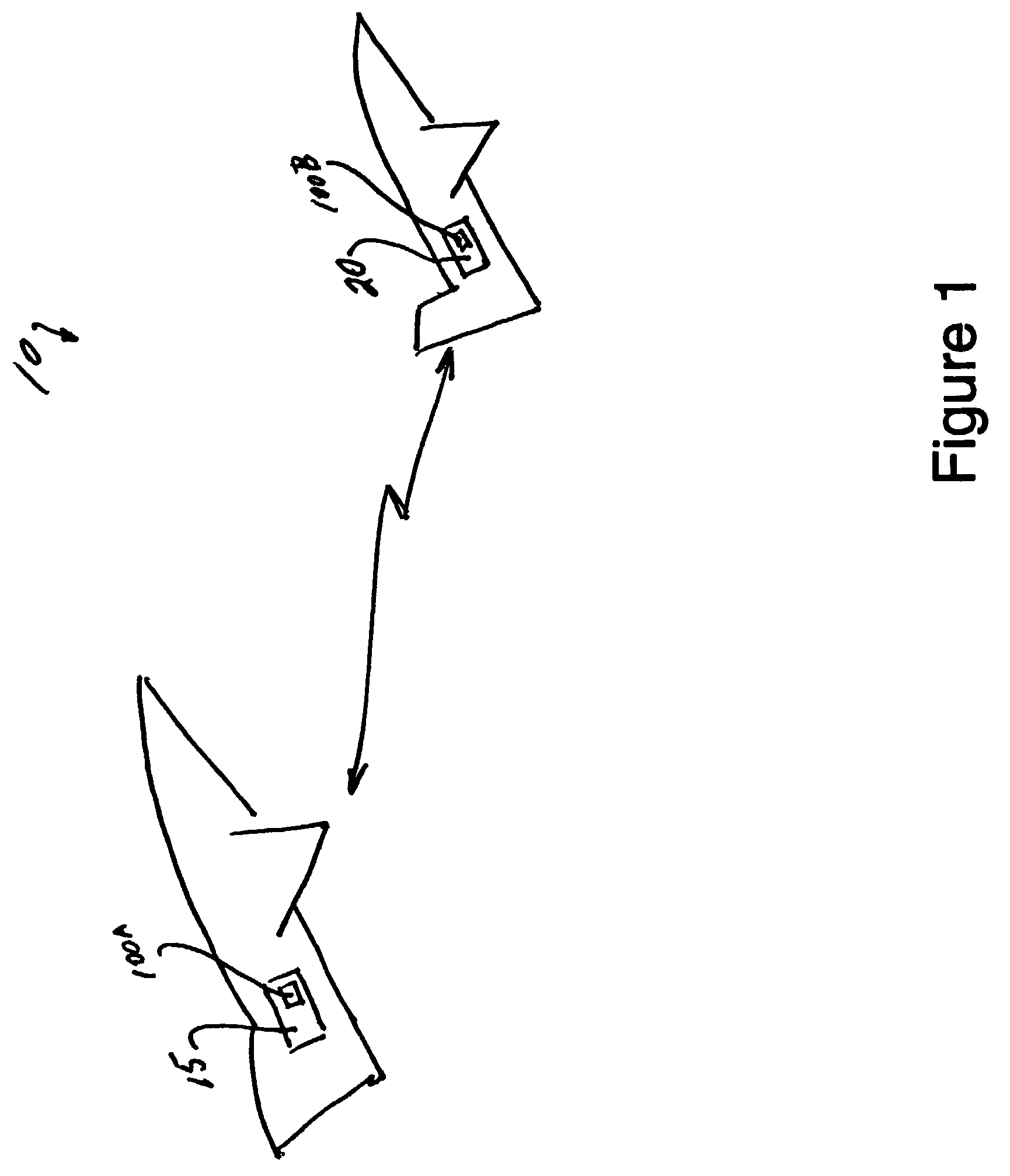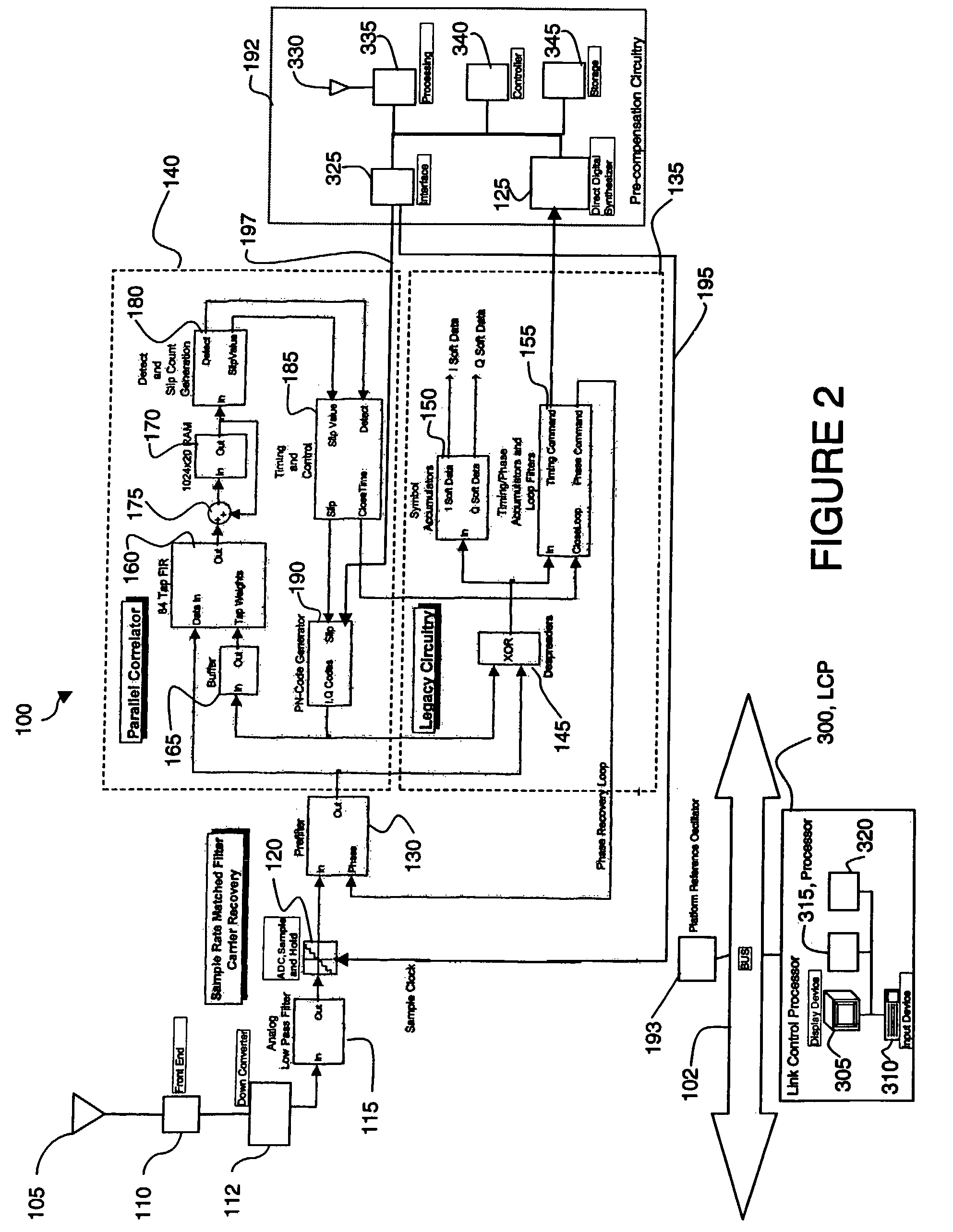Acquisition and tracking of burst code signals
a burst code and signal acquisition technology, applied in the field of signal correlation, can solve problems such as too long time period to be practical, and achieve the effect of reducing acquisition tim
- Summary
- Abstract
- Description
- Claims
- Application Information
AI Technical Summary
Benefits of technology
Problems solved by technology
Method used
Image
Examples
Embodiment Construction
(s)
[0022]FIG. 1 shows a diagram of 2 aircraft that may utilize a digital communication system 10 including a first airborne platform, referred to hereinafter as a central platform 15, and a second airborne platform, referred to hereinafter as a terminal platform 20. Central platform 15 and terminal platform 20 may use TDMA technology to communicate with each other. While the present invention may be discussed in the context of airborne platforms, it should be understood that the present invention may be utilized in any terrestrial or non terrestrial applications, including space, air, water, or land based applications, or combination of applications.
[0023]Referring to FIG. 2, a block diagram of a digital demodulator system 100 incorporating features of the present invention is illustrated. Although the present invention will be described with reference to the embodiment shown in the drawings, it should be understood that the present invention can be embodied in many alternate forms....
PUM
 Login to View More
Login to View More Abstract
Description
Claims
Application Information
 Login to View More
Login to View More - R&D
- Intellectual Property
- Life Sciences
- Materials
- Tech Scout
- Unparalleled Data Quality
- Higher Quality Content
- 60% Fewer Hallucinations
Browse by: Latest US Patents, China's latest patents, Technical Efficacy Thesaurus, Application Domain, Technology Topic, Popular Technical Reports.
© 2025 PatSnap. All rights reserved.Legal|Privacy policy|Modern Slavery Act Transparency Statement|Sitemap|About US| Contact US: help@patsnap.com



